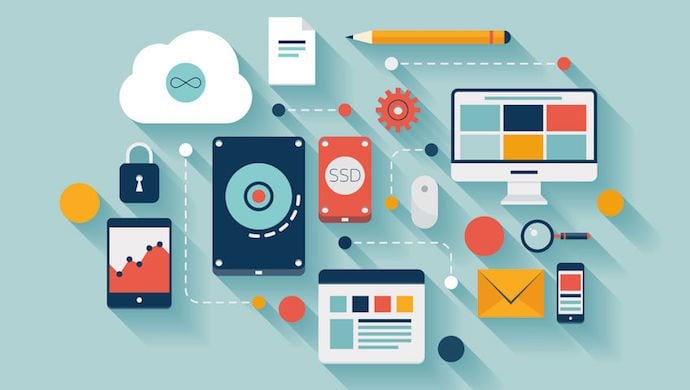IoT is finally taking off. Businesses can benefit, but we all need to make some adjustments

Internet-of-things tech has finally started to gain pace. With so many developments in IoT, it’s reasonable to say that such connected technologies will finally begin to take off this year. We can already see its use in several industries like automotive, energy, healthcare, transportation, and in smart manufacturing, as well as in various home applications like door well cam, air tracking, smart electricity plug, security system, intelligent oven, thermostat, and several others.
So is your business IoT ready? How businesses will be affected by IoT? This is what this article is trying to find. Let’s begin:
1. More data available
Data is the key for any business to thrive in any market today. The more data a business owner has, the more the company can connect with consumers. And of course, being able to engage this way will generate more revenue, too. Connected devices are now designed to collect the more data than ever before — the aim is to provide more targeted services to users. An IoT-ready business is able to track and record consumer behaviour patterns, which can then be used to optimise marketing/advertising strategies, which prove to be more effective in targeting demographics on a more precise level.
With accurate data in hand, businesses are able to make intelligent product recommendations and customise searches, in order to attract more customers.
2. IoT-enabled inventory management processes
IoT is also revolutionising tracking and management of inventory. A business depending on warehousing, manufacturing, or storage can implement IoT-enabled remote scanners helping workers easily track inventory of items. We can also expect a completely automated IoT based inventory management solution, freeing up companies from any sort of manual inputs, which often cause many irregularities. So IoT isn’t merely about ‘smart home’ or ‘smart appliance’ but it is also about ‘smart office’, ‘smart warehouse’, and so on.
Also Read: Asia Pacific will be a driver of global IoT growth in the next 5 years
3. Better efficiency from remote working
IoT offers pretty good possibilities for those who want to work remotely, particularly within their own company premises. For example, IoT technology is coupled with wireless technology, enables employees to check in and out of locations without the need for extra intervention.
IoT sensors and devices “know” who you are, and saves time by allowing users to conduct transactions seamlessly using mobile or connected devices they bring with themselves, such as a smartphone. The same can be done with workers in an office building or a factory floor.
4. Faster sales and buying cycles
The buying cycle will turn out to be shorter as better data collection enables consumers to access products faster. This will be optimised or customised according to their needs. Searching items will be possible even with a handful of spoken phrases, which can help consumers find the exact products they are looking for. Yes, consumers will demand for quick delivery, and fortunately, e-commerce partners such as suppliers and logistics service providers will also implement IoT-enabled practices at their workplace, which will result in faster processing of orders.
Also Read: 2017 will be big year for AR, but we are still not ready yet for voice search
5. Better efficiency and productivity
Speed isn’t everything. Businesses also need to complete their operations productively and efficiently. IoT will really increase the speed of several business processes without any compromise to efficiency and productivity. Latest developments in IoT will empower your workers to accomplish big tasks quickly with reduced risk of errors. Also, companies, businesses and factories will be able to complete their operations with fewer staff members.
6. New consumer needs
While empowering your business with IoT, don’t forget customers using IoT-enabled devices will have new needs. They will also want things they have never asked before. Of course, they will expect more out of every new purchase they make and every new order they place. This is where IoT-powered smart devices play a crucial role, particularly with new standards for appliances, gadgets, accessories, tools and everything that can have the web or computer connectivity.
7. New employee skills are also required
While IoT will inevitably reduce manpower and staffing requirements for some industries, it will also come with increased need for skills related to technology and connectivity. Your business will require new staff members, or you can train existing ones, in order to adapt better with these new technologies. You will certainly need experts who can handle IoT operations and successfully integrate these IoT-devices into your current processes.
Wrapping up
But how quickly is the IoT going to take off? The initial estimates were fairly ambitious a few years back. There were several overestimations on how rapidly people would adopt these devices, but it still took several years. The technology of IoT is gradually finding its place in the world, and as many reports suggest, 2017 will be the year wherein we will see IoT devices exploding in popularity, particularly for general purpose computing tasks. Let us wait and see.
—-
The views expressed here are of the author’s, and e27 may not necessarily subscribe to them. e27 invites members from Asia’s tech industry and startup community to share their honest opinions and expert knowledge with our readers. If you are interested in sharing your point of view, submit your post here.
Featured Image Copyright: bloomua / 123RF Stock Photo
The post Connected everything: Here are 7 ways IoT will change the business landscape this year appeared first on e27.